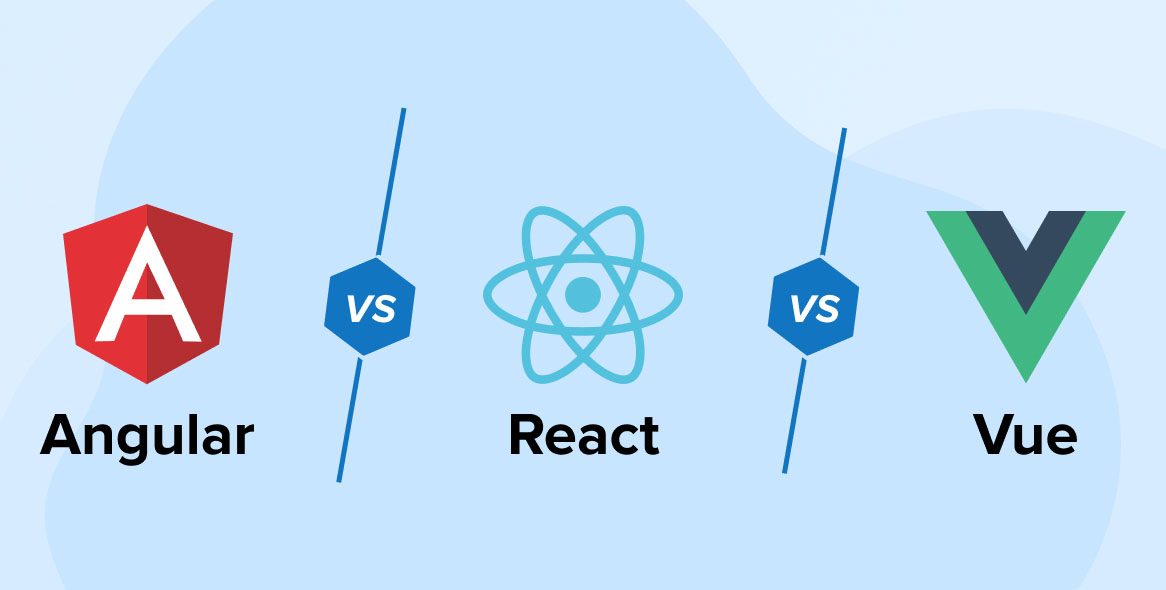The Future of JavaScript Frameworks: Angular, React, and Vue in 2025
 Raj Goldar
Raj Goldar
Introduction
JavaScript frameworks continue to evolve, shaping the way developers build modern web applications. Angular, React, and Vue are three of the most popular frameworks, each with its own strengths and use cases. As we move into 2025, let’s explore the future of these frameworks, their upcoming advancements, and how they compare in terms of performance, adoption, and ecosystem growth.
1. Angular: The Enterprise Powerhouse
Angular, maintained by Google, remains a robust framework for large-scale enterprise applications. Its strong architecture, TypeScript integration, and powerful tooling make it a preferred choice for complex projects.
Future Trends for Angular in 2025
Enhanced Performance & Hydration Improvements: Angular 18 introduces zoneless applications, improving performance and reactivity.
Better Developer Experience: The framework continues simplifying state management, dependency injection, and SSR (Server-Side Rendering).
Integration with AI and ML: Expect improved support for AI-driven applications with TensorFlow.js and other libraries.
Component-Driven Architecture: Enhanced support for standalone components for better modularity and flexibility.
Best Use Cases
Enterprise applications (banking, healthcare, fintech)
Large-scale applications requiring strict architecture
Teams preferring TypeScript and a full-featured framework
2. React: The Dynamic Ecosystem Leader
React, developed by Meta, remains the dominant choice for dynamic and interactive UI development. With its component-based architecture, React has become the foundation for many web and mobile applications.
Future Trends for React in 2025
React Server Components (RSC) Maturity: Improved support for server-side rendering with Next.js, enhancing performance.
AI-Powered UI Development: Tools like AI-generated components and automated UI optimizations.
Concurrent Mode & Suspense Enhancements: Smoother user experiences with non-blocking rendering.
Expanded React Native Growth: More seamless web-to-mobile development workflows.
Best Use Cases
SPAs (Single Page Applications) with dynamic UIs
Applications requiring a large ecosystem of third-party libraries
Startups and projects needing flexibility and scalability
3. Vue: The Developer-Friendly Framework
Vue.js, with its progressive and adaptable nature, continues to be the preferred choice for developers seeking a balance between simplicity and power.
Future Trends for Vue in 2025
Vue 4 and Composition API Evolution: More improvements in reactivity, performance, and maintainability.
Stronger TypeScript Integration: Vue embraces TypeScript for better scalability.
Vue's Growing Ecosystem: Improved support for Vue-based meta-frameworks like Nuxt.js.
More Adoption in Hybrid Apps: Vue with Vite and Capacitor gaining traction in hybrid mobile development.
Best Use Cases
Small to medium-sized applications
Applications that require quick development with a gentle learning curve
Teams looking for flexibility between React and Angular
4. Comparison Table
| Feature | Angular | React | Vue |
| Performance | ✅ ✅ ✅ | ✅ ✅ ✅ | ✅ ✅ ✅ |
| Learning Curve | ❌ Steep | ⚖️ Moderate | ✅ Easy |
| Ecosystem | ✅ Strong | ✅ ✅ ✅ Vast | ✅ Growing |
| Enterprise Adoption | ✅ ✅ ✅ High | ✅ ✅ Medium-High | ✅ Medium |
| Flexibility | ✅ Structured | ✅ ✅ High | ✅ ✅ High |
5. Conclusion: Which Framework Should You Choose in 2025?
Choose Angular if you are building a large enterprise application that requires strict architecture and strong TypeScript support.
Choose React if you want a dynamic UI with a large ecosystem, server components, and flexibility.
Choose Vue if you need an easy-to-learn, progressive framework with powerful reactivity and a growing community.
The future of JavaScript frameworks in 2025 looks promising, with all three frameworks continuously evolving. The best choice depends on your project requirements, team expertise, and long-term scalability goals. Which one will you choose?
Subscribe to my newsletter
Read articles from Raj Goldar directly inside your inbox. Subscribe to the newsletter, and don't miss out.
Written by
